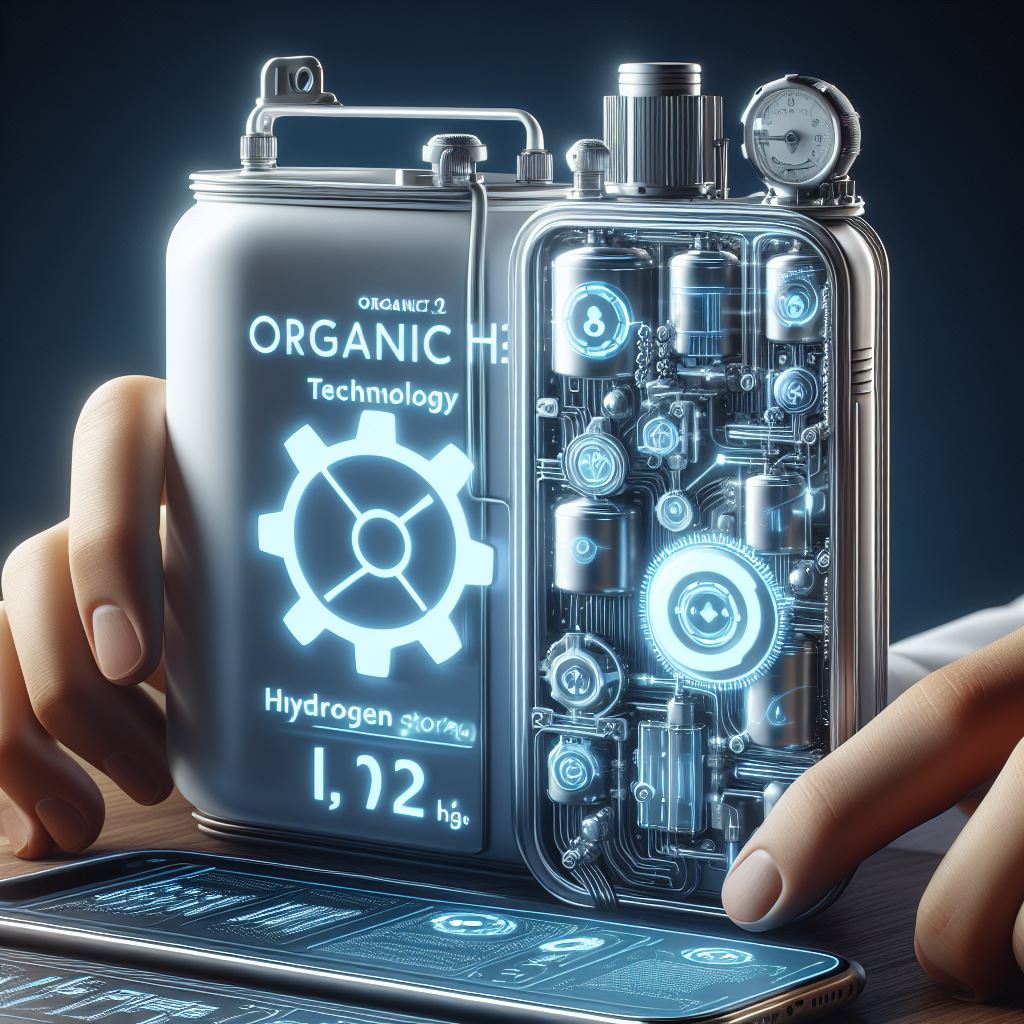

At Organic H2, we developed unique systems for deliverance of green hydrogen and green and safe power. The intermediate steps are bypassed, and this improves the efficacy and mitigates the energy losses. All technologies are subjected to IPR and all rights are reserved for Organic H2.

At Organic H2, we divide the technologies to four categories:
Electrochemical-assisted Liquid Organic Hydrogen Carriers (E-LOHC) is a technology to directly store green hydrogen. The process is straight, and the path starts from water, where typically the green hydrogen is produced from, and ends to the perfect storage, where hydrogen is covalently bonded to the storage media. Indeed, the process includes the electrochemical transferring of protons from water to liquid organic. The process runs in ambient conditions, room temperature and atmospheric pressure. This is based on redox reactions, i.e. the oxidation of proton source provides the reactants to be loaded into liquid organic. The electricity for this redox is provided by the renewable energies. The loaded liquid organic is stable at the ambience for years. This loaded liquid also could be transported to wherever the hydrogen is demanded. Whenever hydrogen is needed, the unloading process is carried out catalytically. As a result of unloading, the liquid organic is recovered and is capable of loading again.
Hydrogen gas is the product of the E-LOHC and this could supply the demand of hydrogen for industries.
The process of loading/unloading is a closed-cycle one and there is no consumption of organic component.
The proton source could be anything such as wastewater, seawater, and so on.
Liquid Organic Proton Carriers (LOPC) is a technology of absolute safe and direct to deliver green power based on a similar concept to E-LOHC. As the name suggests, the technology is based on proton carrying, where the protons are loaded to the liquid organic. To this, a redox reaction is the key component, where renewable and green electricity powers the oxidation of proton source (typically water or wastewater, seawater, etc.). These protons are loaded into liquid organic under ambient conditions. The proton-loaded organic liquid could be stored up to years under ambient. It also could be transported to wherever power and electricity is demanded. Where power is needed, the loaded protons could be extracted from liquid organic. Next, the extracted protons are combined with air (oxygen) to render power. The unloaded liquid organic also is ready to be loaded again. In fact, the liquid organic is loaded up with protons, carry them safely, and finally render them to oxygen.
LOPC delivers the green electricity, and this is a perfect energy storage concept that could be adjusted for small or large scale.
The process of loading/unloading is a closed-cycle one and there is no consumption of organic component.
In this system, no hydrogen gas is dealt with, and this means that hydrogen explosion risk is absolutely zero.
Membranes play pivotal roles in various electrochemical devices, ensuring efficient and selective transport of ions. Membranes, typically composed of specialized materials, are designed to facilitate specific ion movement while impeding the crossover of undesired species. This selective permeability is crucial in applications such as fuel cells, where proton exchange membranes enable the exclusive passage of protons, contributing to optimal cell performance.
Both E-LOHC and LOPC technology is based on proton conductivity, especially E-LOHC is based on proton transfer from aqueous liquid to organic one. We employed carbon chemistry to block the crossover of parasitic diffusion. In our membrane, the structure is tuned to have a selective ion diffusion of protons. To enhance the proton conductivity inside the membranes, functionalized carbonaceous matters are arranged in the membranes.
The selective membrane is also applicable to other electrochemical devices e.g. redox flow batteries.



